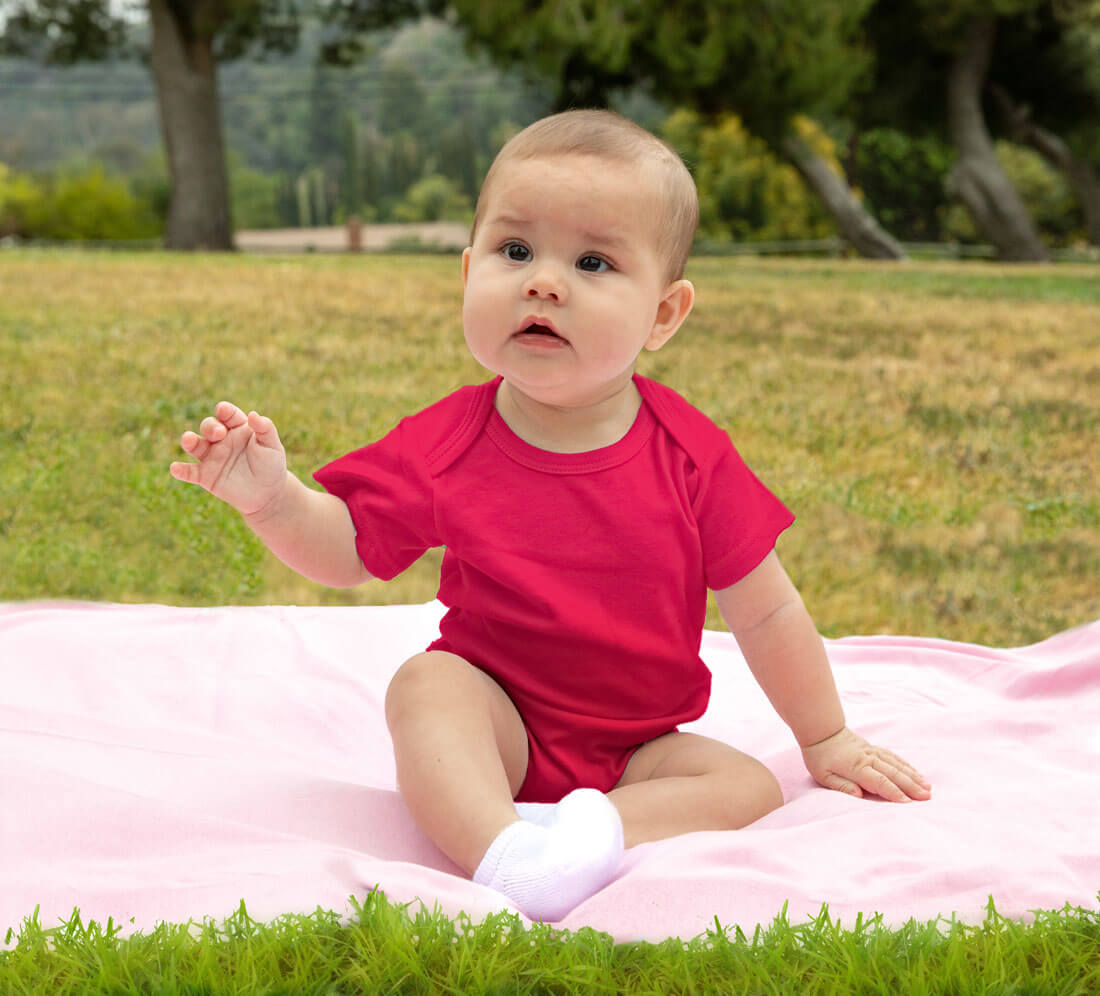The purpose of a onesie is to allow for your baby the comfort of a shirt with the added benefit of not having to worry about the shirt riding up as well as keeping cloth diapers from falling down throughout the day. Quite often the onesie comes with “enveloped” shoulder that expands the opening where the baby’s head is fed through. This offers ease in both putting on and taking off the onesie.
Beyond answering the basics of “What is the purpose of a onesie”, let’s take a quick look at the three most important parts of what makes up a onesie. We’ll be sure to go into more details about how to take off a onesie (the answer might surprise you) and further details about them in future blogs.
Three Most Important Parts of a Quality Onesie
1. Enveloped Shoulders
To help in both putting on and taking off a onesie, be sure that you buy onesies that have enveloped shoulders. The enveloped design aids in expanding the opening around the neck out to the shoulders as seen here:

2. Quality Sleeves
Onesies come with several types of sleeves and it’s important to choose a onesie with a high quality finished sleeve. Some manufacturers use a ruffles sleeve and others use a raw, or unfinished, sleeve. At Soft Bebe we use a fully finished double needle hemmed sleeve. We find that this helps with the durability of the garment.
3. Metal Snaps
There are usually a couple of options when it comes to the closures on a onesie. The most common are button and velcro closures. Of those two, button snaps usually hold up for a longer period of time. You will find snaps in two options: plastic or metal. We prefer to use metal snaps due to their durability over their plastic counterpart. We also go the extra step and color match the metal snaps to the color of the fabric.
At Soft Bebe we offer both short sleeve onesies and long sleeve onesies.
or

